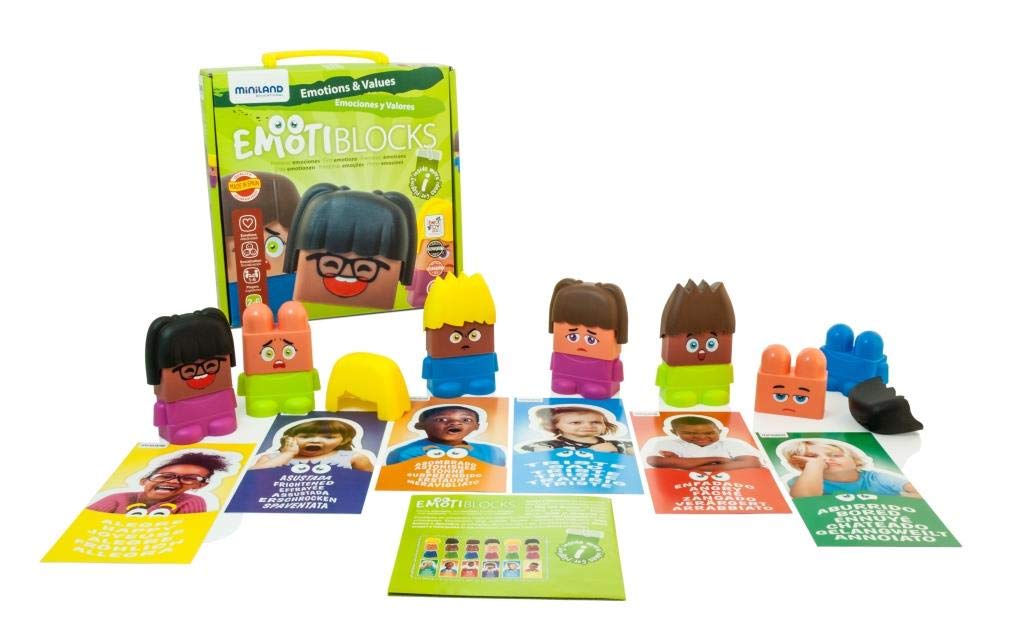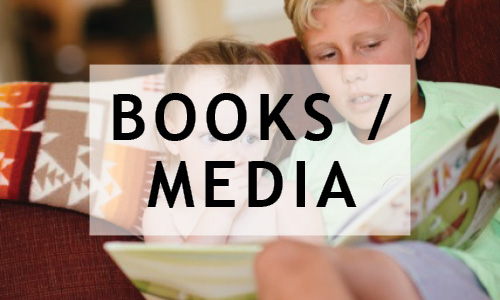 Kids were fascinated with the six facial expressions on the blocks, reflecting diversity–astonished, bored, sad, happy, frightened and angry–as they chose one and started to build their character, adding hair and a body. Pretend play was naturally generated by their unique characters until a child asked, “How do we play the game?” Instructions offer three different modes of game play, involving matching the expression on the emotion cards with face blocks, constructing characters and imitating the gesture on an emotion card selected, as others guess what is portrayed. Parents and teachers can take play a step further and ask children to tell when they felt one of the emotions, after selecting one to talk about. “When did you feel happy?” “When I swam to the raft without a life jacket” one little boy proudly responded. “When were you frightened?” Another said, “When it thunders!” He went on to talk about a big rain storm where he climbed in bed with this mom. Emoti Blocks can help kids to recognize, name emotions and share when they felt that way, perhaps even observe when a friend felt that way, and how they could help a sad or frightened buddy. These blocks can be used to teach and build several levels of Emotional Intelligence, recognizing and regulating their own emotions and feeling empathy for others. Let’s give kids the language of emotion to better care for themselves and others.
Kids were fascinated with the six facial expressions on the blocks, reflecting diversity–astonished, bored, sad, happy, frightened and angry–as they chose one and started to build their character, adding hair and a body. Pretend play was naturally generated by their unique characters until a child asked, “How do we play the game?” Instructions offer three different modes of game play, involving matching the expression on the emotion cards with face blocks, constructing characters and imitating the gesture on an emotion card selected, as others guess what is portrayed. Parents and teachers can take play a step further and ask children to tell when they felt one of the emotions, after selecting one to talk about. “When did you feel happy?” “When I swam to the raft without a life jacket” one little boy proudly responded. “When were you frightened?” Another said, “When it thunders!” He went on to talk about a big rain storm where he climbed in bed with this mom. Emoti Blocks can help kids to recognize, name emotions and share when they felt that way, perhaps even observe when a friend felt that way, and how they could help a sad or frightened buddy. These blocks can be used to teach and build several levels of Emotional Intelligence, recognizing and regulating their own emotions and feeling empathy for others. Let’s give kids the language of emotion to better care for themselves and others.
Available on Amazon. Click here



